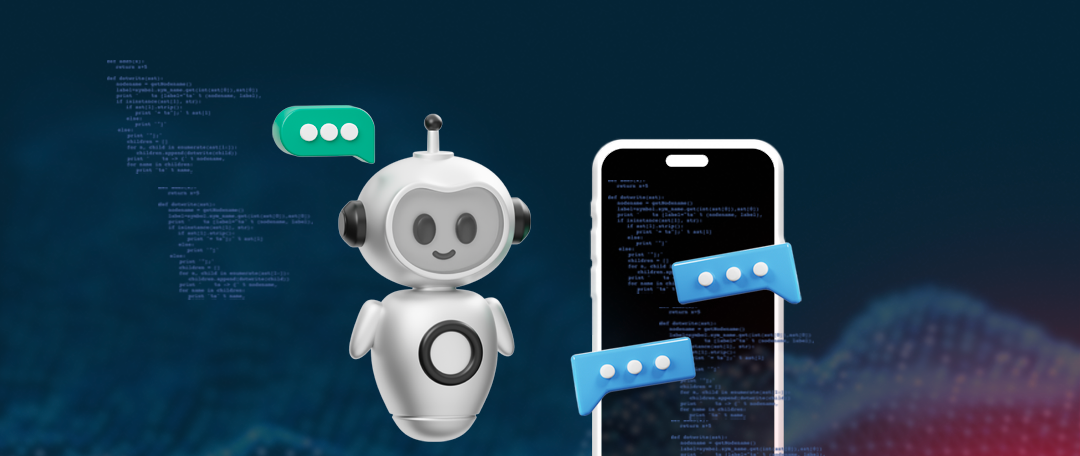C-level executives often come across buzzwords like “artificial intelligence (AI)” and “machine learning (ML).” They promise disruption, revolution, and a competitive edge, but understanding how to harness them may feel like deciphering hieroglyphics.
The term ML can conjure up images of robots taking over the world, but for executives, it’s not science fiction – it’s the present. ML is transforming businesses across industries, from optimizing marketing campaigns to predicting equipment failures. But with its huge and rapidly expanding dictionary of technical concepts, the concepts of machine learning can feel like a foreign language to C-suite leaders.
In this machine learning guide, we delve into its major benefits and future implications.
What is Machine Learning?
Machine learning is a way for computers to learn from data without being explicitly programmed.
Imagine a program that learns from data, uncovering hidden patterns, and making predictions without explicit programming. That’s how you can explain machine learning in a nutshell. It’s like having a tireless data analyst who constantly refines their insights as they ingest more information.
Traditional software follows rigid rules. ML, on the other hand, is constantly experimenting, adapting, and improving its responses based on the provided feedback (the data). This ability to learn and evolve is what makes ML so powerful – McKinsey Global Institute estimates that AI could contribute up to $13 trillion to the global economy by 2030. This is precisely why executives should build an understanding of why machine learning is important and how it can help not only expand their businesses but also evolve the technological field of data and analytics.
Understanding the concepts
ML is based on algorithms that can learn from data without relying on rules-based programming. Machine learning itself can be divided into three major types:
1. Supervised learning
Supervised learning is when an algorithm uses training data and feedback from humans to learn the relationship of given inputs to a given output (e.g., how the inputs “time of year” and “interest rates” predict housing prices).
2. Unsupervised learning
Unsupervised learning is when an algorithm explores input data without being given an explicit output variable (e.g., explores customer demographic data to identify patterns).
3. Reinforcement learning
Reinforcement learning is when an algorithm learns to perform a task simply by trying to maximize the rewards it receives for its actions (e.g., maximizing points it receives for increasing returns of an investment portfolio).
What makes machine learning so incredible?
The clear benefits of Machine Learning touch on different aspects of business and technology, bringing about significant improvements, such as:
Enhanced efficiency and productivity
Machine Learning streamlines operations by automating routine tasks and optimizing processes. This not only saves significant time and resources but also allows organizations to focus on more complex and strategic aspects of their work. For example, the ability to predict equipment failures before they occur minimizes downtime, ensuring continuous workflow and maximizing overall efficiency.
Improved customer experience
Businesses are empowered more than ever with ML to offer highly personalized user experiences to their customers. By analyzing vast amounts of data, ML algorithms can predict individual preferences, enabling tailored product recommendations and personalized marketing strategies. This level of customization not only enhances customer satisfaction but also fosters loyalty, as customers feel understood and valued by the brand.
Deeper insights and decision-making
ML algorithms excel at uncovering hidden patterns and trends within large datasets, providing organizations with unique insights. This data-driven approach allows for informed decision-making as leaders gain a comprehensive understanding of market dynamics and consumer behavior. By leveraging these insights, businesses can adapt their strategies proactively, staying ahead of the competition at all times.
Competitive advantage
Embracing machine learning places organizations at the forefront of innovation in their respective industries. By leveraging data analytics and predictive modeling, companies can gain a decisive edge over competitors. The ability to swiftly adapt to market trends, capitalize on emerging opportunities, and deliver superior products or services positions businesses as industry leaders, fostering sustained growth and success.
Building a machine learning strategy
While we all are aware of the good ML brings about in any project, creating and executing a plan for using machine learning is crucial for businesses. It’s like figuring out the best way to use smart computer systems to make decisions and find patterns in data. What are the important things to think about and steps to take in making sure machine learning fits well with what your business needs and can grow as you do? Some of the pointers are as follows:
Define your goals
Clearly articulate the specific business challenges you aim to address through Machine Learning. Ensure that these objectives align seamlessly with your overall business strategy, creating a focused and purposeful approach to implementing ML solutions.
Gather the data
Identify and systematically collect the pertinent data necessary to effectively train your Machine Learning models. This step involves a meticulous examination of data sources to guarantee their relevance and reliability, laying a solid foundation for the success of your ML initiatives.
Choose the right tools and talent
Invest wisely in cutting-edge technology that suits the unique needs of your organization. Additionally, assemble a skilled team of data scientists and ML engineers to not only build but also proficiently manage your models. The combination of advanced tools and expert talent forms the backbone of a robust and sustainable ML strategy.
Start small and scale up
Adopt a phased approach by initiating pilot projects to test and refine your ML strategy. This incremental start allows for valuable insights, adjustments, and improvements before scaling up to broader, enterprise-wide applications. This iterative process ensures a smoother integration of ML into your operations.
Embrace a culture of data
Cultivate a workplace culture that values and embraces data. Encourage open data sharing and collaboration across different departments, fostering a collective commitment to leveraging insights for informed decision-making. A culture that prioritizes data-driven practices enhances the effectiveness and impact of your ML initiatives throughout the organization and aids in seamless digital transformation, too.
Embracing the future – Machine learning in businesses
While the excitement surrounding machine learning is undeniable, it’s vital to remember it’s not a silver bullet. Utilizing ML to its full potential requires careful planning and investment, along with a proper understanding of the stages of machine learning. Think of it as a journey, not a destination. Start by defining clear goals that align with your overall strategy. Next, gather high-quality data, the fuel that powers your models and ensures success. Finally, continuous learning and adaptation. Be prepared to refine your models, learn from experience, and adjust to changing landscapes. You can build your in-house expertise in artificial intelligence and machine learning consulting or seek a trusted AI and data analytics firm to ensure that all your steps are accurate. Through this mindful approach, you can derive actionable and tangible benefits to your business.




